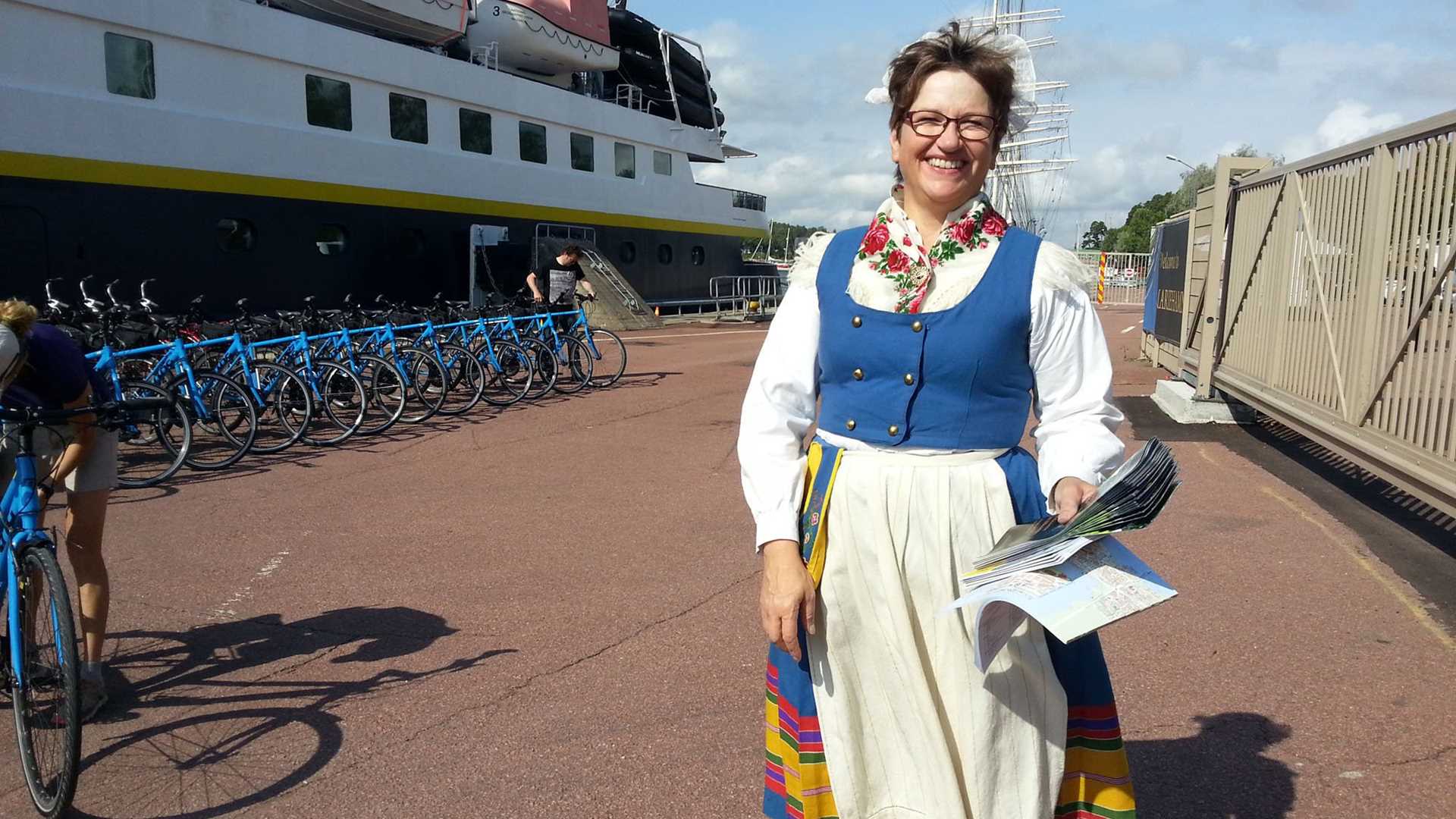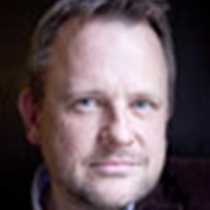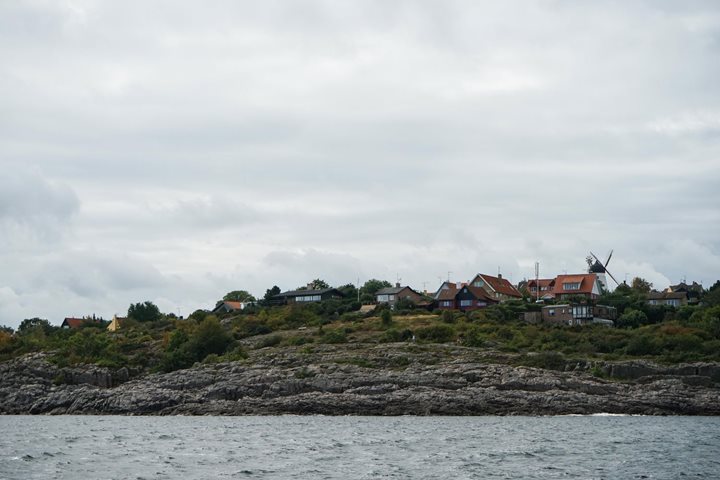A sunrise departure from Stockholm took us through the beautiful archipelago onto the Baltic Sea, northeastward, to Åland or, more precisely, the Åland islands. This is a part of Finland, so euros are useful again, and clocks have to go an hour forward.
Åland, smack in the middle of the Baltic Sea between Sweden and Finland, has had a very checkered history. Like many territories in the region Åland switched hands several times. It was Swedish first, as all of Finland was Swedish until 1809; then Russian, throughout the 19th century, until Finland gained its independence in 1917 and Åland became Finnish. However, special arrangements were made in 1921. The island became an autonomous region within Finland, with its own little parliament, its own tiny government, its own flag, its own stamps and its own number plates. Swedish remained the dominant language, however, something the Ålanders still cling to, despite the fact that most of the politics and the business is conducted in Finnish. A sign on a barn near the church in Norby warns you not to hit your head in Swedish but also in Finnish and English, for good measure.
I was greeted on the quayside in the port, Mariehamn (Marie’s Harbour) by Dagni, in historical costume, which was impressive enough, but not as impressive as the sight of the majestic four-master Pommern, the only bark of its kind that is still fully rigged out. It’s part of the Åland Maritime Museum, recently awarded “museum of the year” in Finland. I joined the bus tour, through Mariehamn and on to the historic church at Norby and the former artists’ colony in the tiny village of Önningeby.
Mariehamn was only founded in 1861, when Åland was a part of Russia, and it has a distinctly Russian feel – elegant wooden houses with verandas, set a little back from the streets, which are lined with lime trees. Some of the nicer fin-de-siècle houses were designed by Hilda Hongell, an architect from the area.
St Brigid’s Church in Norby looked rather unassuming, with a simple white exterior and a stocky bell tower, but the interior had some real treasures. The Reformation in Sweden wreaked havoc with the traditional decorations—the sculptures and frescoes—but here were some first class wooden statues: a 14th-century Madonna and a 15th-century altarpiece, probably German. On the walls restorations had brought to light a series of magnificent paintings, dated to the early 14th century, or perhaps even earlier. They are faded and incomplete, but we could still make out the legend of St Nicholas, secretly supporting the father of three innocent but poor girls, saving them from prostitution, and the miraculous resurrection of three boys who had been slaughtered and pickled, in a tub, by an evil innkeeper.
It’s quite something to realize that the central part of this simple building dates from the 12th century, and some parts may even be older than that—which puts it right in the period when Scandinavia converted to Christianity. Very early history indeed.
The Önningeby Museum is a few miles back on the road to Mariehamn. This is a charming jumble of red buildings, with the strong odour of cow activity and an unusual sight right in the middle of it all: a Maypole—or rather a midsummer pole, an elegant flagpole decorated with red, yellow, and blue garlands (after the colours of the Åland flag) and on top a little figure of a boy, signifying the hopes of the midsummer revelers for a happy romantic result.
The museum houses some remarkably good works from some of Finlands most celebrated painters from the turn of the last century. In the summer of 1886 the Finnish landscape painter Victor Westerholm (1860-1919) invited some of his artist friends to his new home on Åland. This was the take off for the Önningeby colony that attracted Swedish and Finnish artists for over 30 years, with Elin Danielson, Hanna Rönnberg, J.A.G. Acke and Edward Westman among them. Many of them found inspiration in the Åland countryside, and its magical or romantic connotations, much like the great composer Jean Sibelius did when he put the myths of the Kalevala, Finlands national epic, to music. Many of the paintings show a deep appreciation for the special natural world of Åland—birch trees, pine forests, the delights of winter.
We rounded this trip off with coffee at the Bagarstugan coffeehouse, back in Mariehamn, which claims to date from 1866. The coffee was fine, but the real treat was a piece of Ålands Pannkaka, or pancake with plum jam and cream. Looked a bit daunting, at first, but it was surprisingly light, with a nice touch of cardamom.
Finally: beer and songs aboard that magnificent sailing ship, Pommern. This is quite a sight: all the fittings and trimmings intact, including the blankets on the bo’sun’s bed and the smell of countless cargos of wheat in the enormous hold below. And who knew that Swedes can do more than copy ABBA, but actually sing a moving sailor’s tune with just a guitar and a drum to accompany them?
Mind you, they were nothing compared to the dazzling crew show that ended the day. Go Jamie!






